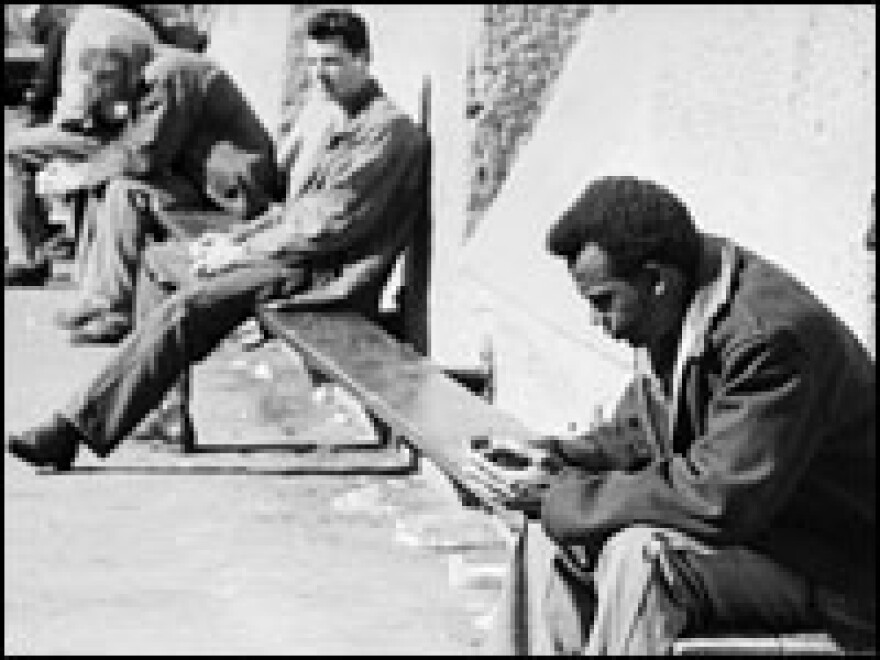
The Aryan Brotherhood began with incarcerated white supremacists who aligned themselves against black and Mexican prisoners. Over its four-decade history, the gang has become less about racist ideology (it has allegedly formed alliances with the Mexican Mafia, another prison gang) than about the acquisition of power.
The "Brand," as the gang is also known, is a selective group; often, a murder or other significant act of violence is required to gain membership. In the 10-year period ending in 1985, for example, incarcerated AB members were linked to 40 homicides in California alone. A brief history of the gang:
1964: The Aryan Brotherhood is founded in California's San Quentin maximum-security prison. Irish bikers formed the Brotherhood to fight against the Black Guerrilla Family. It is rumored that the AB sprung from a 1950s gang known as the Bluebirds.
1980: Throughout the 1980s, the gang becomes more organized as it establishes a chain of command. Two factions of the gang exist -- federal and California state. The federal faction creates a three-man commission to supervise gang activity in federal prisons. Allegedly, Barry Mills and Tyler Bingham are selected to oversee the gang's actions as high commissioners.
1982: An FBI report states that members of the Brotherhood are recruiting new members from prisons around the country. Prison officials try to disband the group by moving members throughout the correctional system. The AB forms a California commission and council that must approve the murder and assault of gang members who violate the organization's rules.
Oct. 22, 1983: Four guards are stabbed, two fatally, by AB members at the U.S. Penitentiary in Marion, Ill. It is the first time in federal prison history that two guards are killed on the same day.
1990s: Authorities relocate most of the Brotherhood's leaders to "Supermax" prisons, where prisoners are held in single cells for almost the entire day. The gang continues murdering prisoners and trafficking drugs.
1992: Assistant U.S. Attorney Michael Jessner begins investigating the gang after it is linked to the strangulation of a prisoner in his cell at the Lompoc federal prison in California.
1993: The AB's federal commission forms a council that organizes day-to-day gang activity in the federal faction.
Fall 1994: Michael Patrick McElhiney arrives at the maximum-security federal prison in Leavenworth, Kan. He came from the Marion federal prison, where he served time with Barry Mills. McElhiney quickly becomes a much-feared AB gang member. In 2002, he is charged with running the gang's day-to-day operations at Marion and with controlling drug trafficking at Leavenworth.
March 24, 1995: Pelican Bay State Prison, a Supermax facility in northwest California, releases gang member Robert Scully on probation. Six days later, Scully fatally shoots a police officer -- evidence that AB crimes have moved beyond gang grudges and prison walls.
1997: Barry Mills and T.D. Bingham allegedly order a race war at a prison in Lewisburg, Pa., leading to the deaths of two black inmates.
1999: Barry Mills writes letters to paroled gang members, urging them to expand the gang's activities outside the prison. The gang allegedly used paroled members as drug dealers, gunrunners, stickup men and hit men.
Aug. 28, 2002: Assistant U.S. Attorney Gregory Jessner indicts nearly all the members suspected of being leaders in the gang. He charges them with carrying out stabbings, strangulations, poisonings, contract hits, conspiracy to commit murder, extortion, robbery and narcotics trafficking.
March 14, 2006: The first in a series of gang-member trials begins in Orange County, Calif., for Barry "The Barron" Mills, T.D. "The Hulk" Bingham, Edgar "The Snail" Hevle and Christopher Overton Gibson. The four are accused of ordering or participating in 15 murders or attempted murders in the last 25 years. Federal racketeering charges are brought against 40 AB members, including Michael McElhiney. In a 140-page indictment, federal prosecutors outline gang actions that allegedly resulted in 32 murders or attempted murders in and out of prison.
July 13, 2006: The defense makes its closing arguments in Santa Ana, Calif., in the trial against accused gang members Mills, Bingham, Heyle and Gibson.
October 2006: Eleven more Aryan Brotherhood members are expected to go on trial in Los Angeles for similar racketeering charges.
Copyright 2023 NPR. To see more, visit https://www.npr.org. 9(MDM3NjYwMjA5MDE1MjA1MzQ1NDk1N2ZmZQ004))

